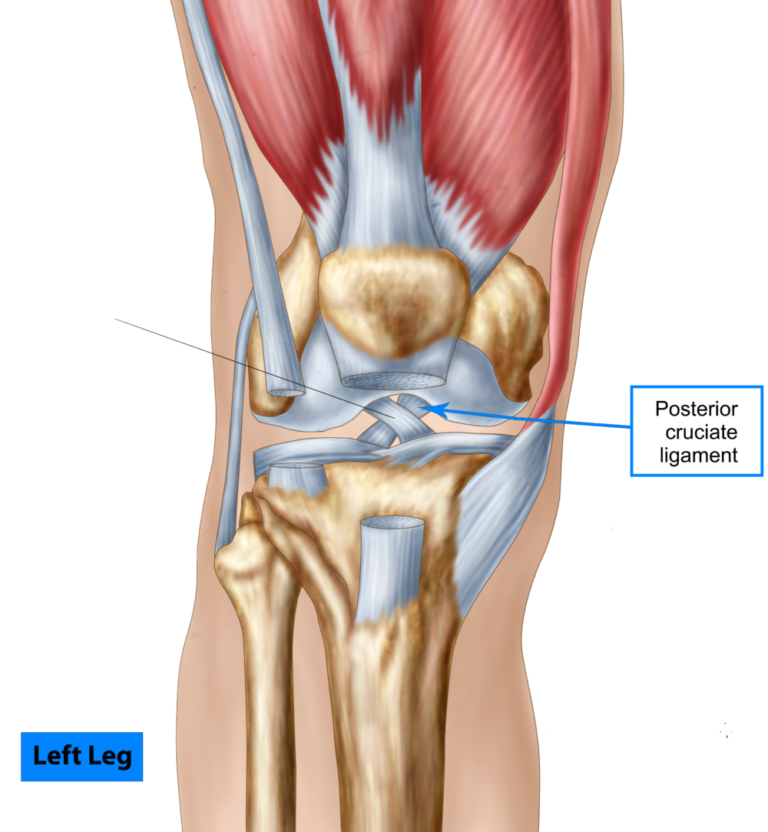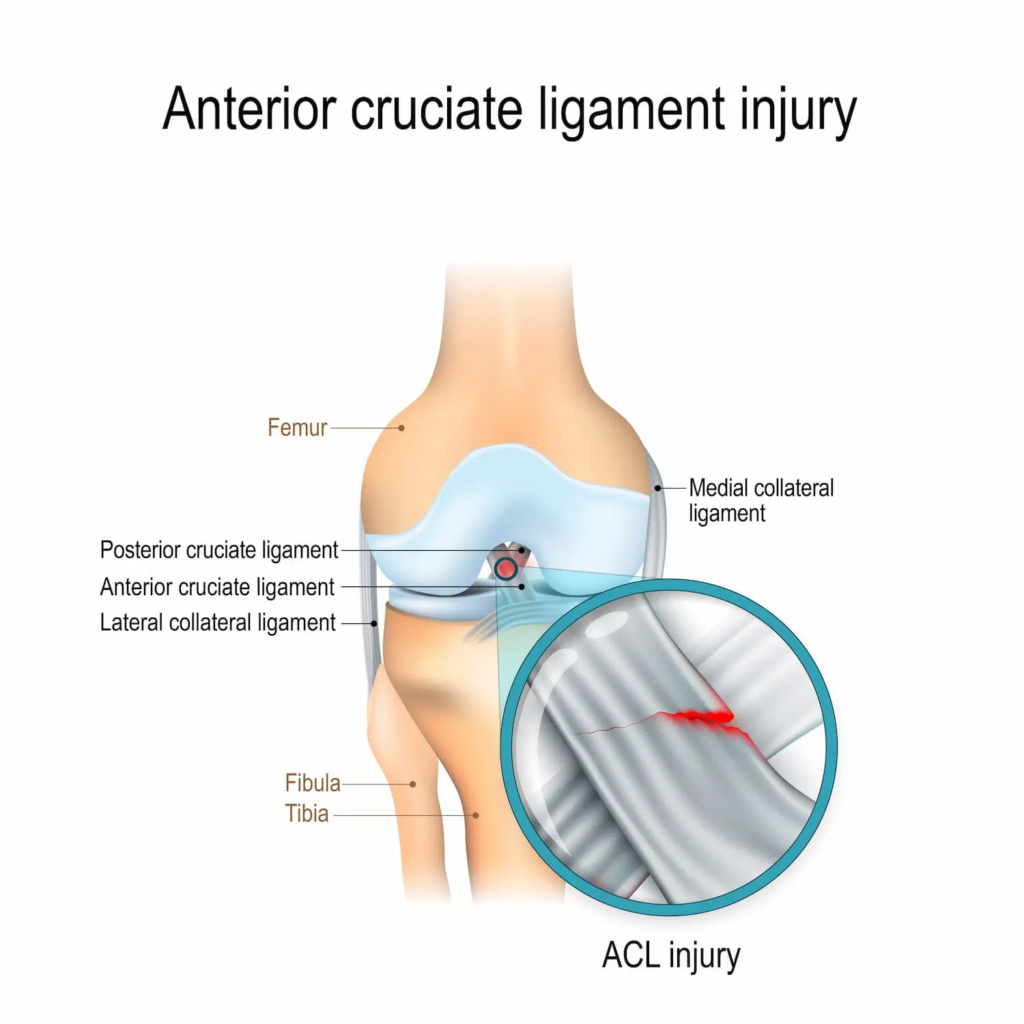PCL Injury

A posterior cruciate ligament injury can be a devastating experience. This comprehensive guide will provide you with information on the PCL, its function, symptoms, and treatment options. You’ll also learn about prevention strategies to help keep you safe on the court or field. So whether you are a professional athlete or just enjoy playing recreational sports, read on for everything you need to know about PCL injuries.

What are posterior cruciate ligaments?
The posterior cruciate ligament (PCL) is one of four major ligaments that stabilize the knee joint. It is located in the back of the knee and connects the femur (thigh bone) to the tibia (shin bone). The PCL helps prevent the tibia from sliding backward under the femur.
PCL injuries are relatively rare, accounting for only 2-4% of all knee ligament injuries. When they do occur, they are usually the result of a direct blow to the front of the knee, such as from a football tackle or a fall during skiing.
PCL injuries can also occur gradually over time from repetitive stress on the ligament, such as with long-distance running.
Symptoms of PCL Injuries
The most common symptom of a PCL injury is pain in the knee. This can range from a dull ache to sharp pain that limits your ability to move your lower leg. Other symptoms may include:
* Swelling in the knee
* Stiffness in the knee
* Instability in the knee or upper leg
* Limited range of motion in the knee
* Feeling like the knee is giving way
If you experience any of these symptoms after a fall or collision, it’s important to see a doctor right away.
Diagnosis of PCL Injuries
There are several ways to diagnose a PCL injury.
Physical Examination:
Your doctor will likely start with a physical exam and ask about your symptoms and how the injury occurred.
Magnetic Resonance Imaging (MRI):
An MRI can create detailed images of the structures in your knee and is often used to diagnose PCL injuries.
X-rays:
While x-rays can’t show the PCL directly, they can rule out other injuries such as fractures.
Computerized Tomography Scan (CT or CAT scan):
Like other imaging tests, a CT scan can create detailed images of the structures in your knee.
Treatment Options
There are several treatment options available for posterior cruciate ligament injuries, depending on the severity of the injury. For milder cases, rest, ice, and over-the-counter pain medications may be enough to relieve symptoms. More severe cases may require physical therapy or even surgery.
If you do need surgery, there are several different options that can be considered. The most common is a posterior cruciate ligament reconstruction, wherein the orthopaedic surgeons replace the damaged ligament with a tendon from another part of your body.
This surgery is usually quite successful in restoring knee function.

Prevention
There are several things you can do to help prevent a posterior cruciate ligament injury. First, always warm up before participating in any physical activity. This helps increase blood flow to the muscles and joints, making them less likely to be injured. Second, wear proper footwear that provides support for the feet and ankles. Third, avoid playing on uneven or slippery surfaces. And finally, be sure to stretch properly before and after exercise.
If you take these precautions, you’ll be much less likely to suffer a posterior cruciate ligament injury. But even if you do everything right, sometimes a car accident happens.
If you do injure your PCL, remember that there are treatment options available to help you heal and get back to your normal activities.
Risk Factors for PCL Injuries
There are several risk factors that can increase your chances of suffering a posterior cruciate ligament injury. These include:
* Participating in contact sports such as football or soccer
* Playing on irregular or slippery surfaces
* Having had a previous knee injury
* Having weak thigh muscles
* Wearing shoes that don’t provide adequate support
If you have any of these risk factors, it's important to be extra careful when participating in physical activity. Wearing proper protective gear and using appropriate safety measures can help reduce your risk of injury.

Summary
PCL injuries are relatively rare, but they can occur as the result of a direct blow to the knee or from repetitive stress on the ligament. Symptoms include pain, swelling, stiffness, and instability in the knee. If you experience any of these symptoms, it’s important to see a doctor right away for an accurate diagnosis. Treatment options range from rest and ice to physical therapy or surgery, depending on the severity of the injury.
You can help prevent PCL injuries by warming up before exercise, wearing supportive shoes, and avoiding playing on uneven surfaces.
Frequently Asked Questions
The medial collateral ligament (MCL) is a band of tissue that runs down the inner side of the knee, from the thigh bone to the shinbone. It provides stability to the knee joint and helps keep the knee from bending inward. Unlike anterior cruciate ligament tears or other ligament injuries , MCL tears are relatively uncommon.
A torn PCL or MCL is usually caused by a direct blow to the outside of the bent knee, such as in a football tackle. The force of the impact can stretch or tear the MCL. Repetitive stress on the MCL can also lead to an injury over time.
Symptoms of an MCL injury include pain on the inner side of the knee, swelling, and stiffness. The knee may also feel unstable or “give way” when bearing weight.
A doctor will usually be able to diagnose an MCL injury based on a physical examination and a description of your symptoms. X-rays may also be ordered to rule out other possible causes of your pain, such as a fracture. In some cases, an MRI may be necessary to confirm the diagnosis.
A doctor will usually be able to diagnose an MCL injury based on a physical examination and a description of your symptoms. X-rays may also be ordered to rule out other possible causes of your pain, such as a fracture. In some cases, an MRI may be necessary to confirm the diagnosis.
The amount of time it takes to recover from an MCL injury depends on the severity of the injury. Milder injuries may heal within a few weeks, while more severe injuries can take several months.
If an MCL injury is not treated properly, it can lead to long-term instability in the knee joint. This can increase your risk for further knee injuries, such as a meniscus tear or ACL rupture.
The outlook for people with MCL injuries is generally good. Most people make a full recovery with proper treatment. However, some may experience long-term instability in the knee joint, which can increase their risk for further injury.
3 Ways to Level Up Your Rehab and Injury Prevention With Us





